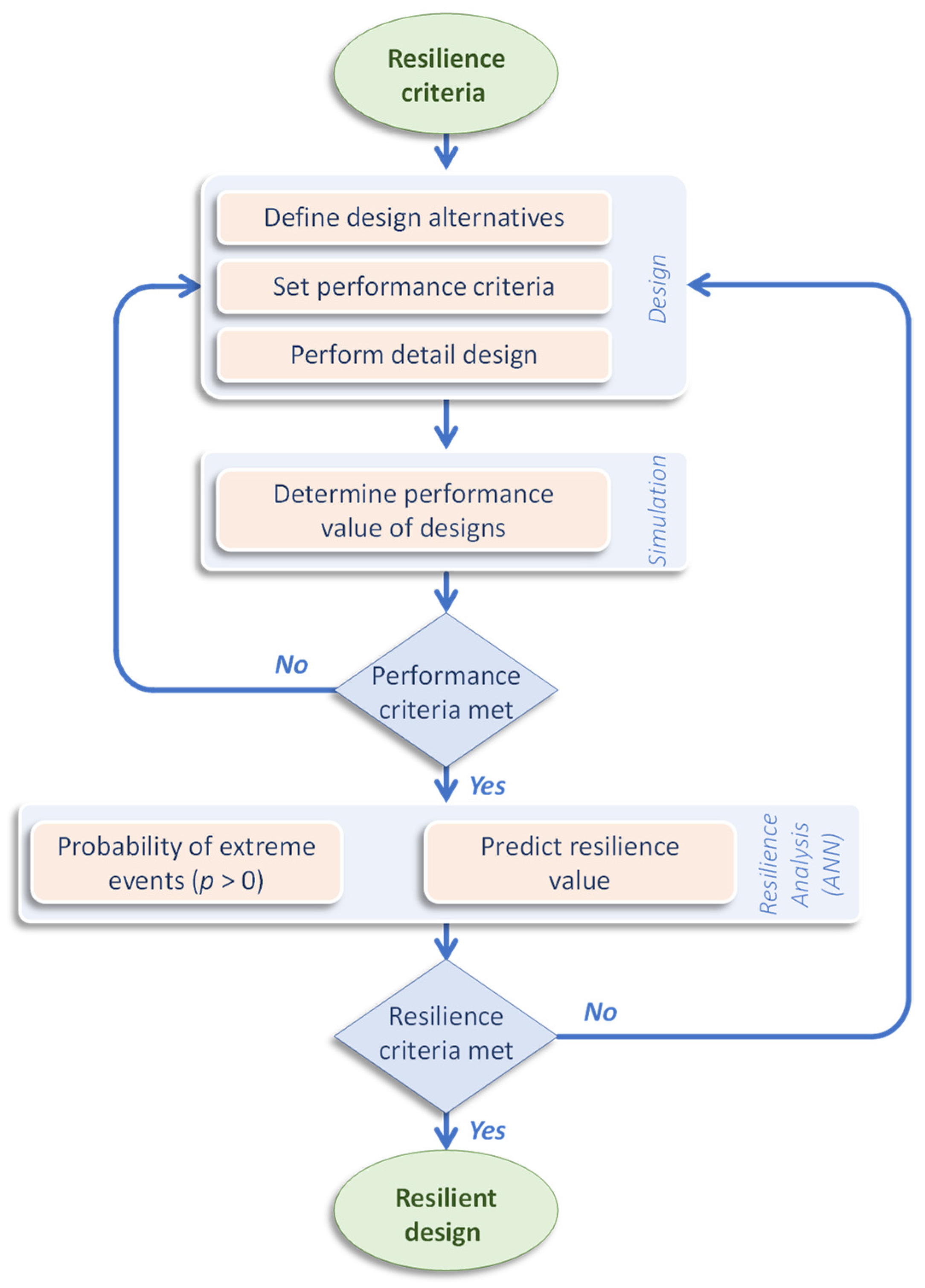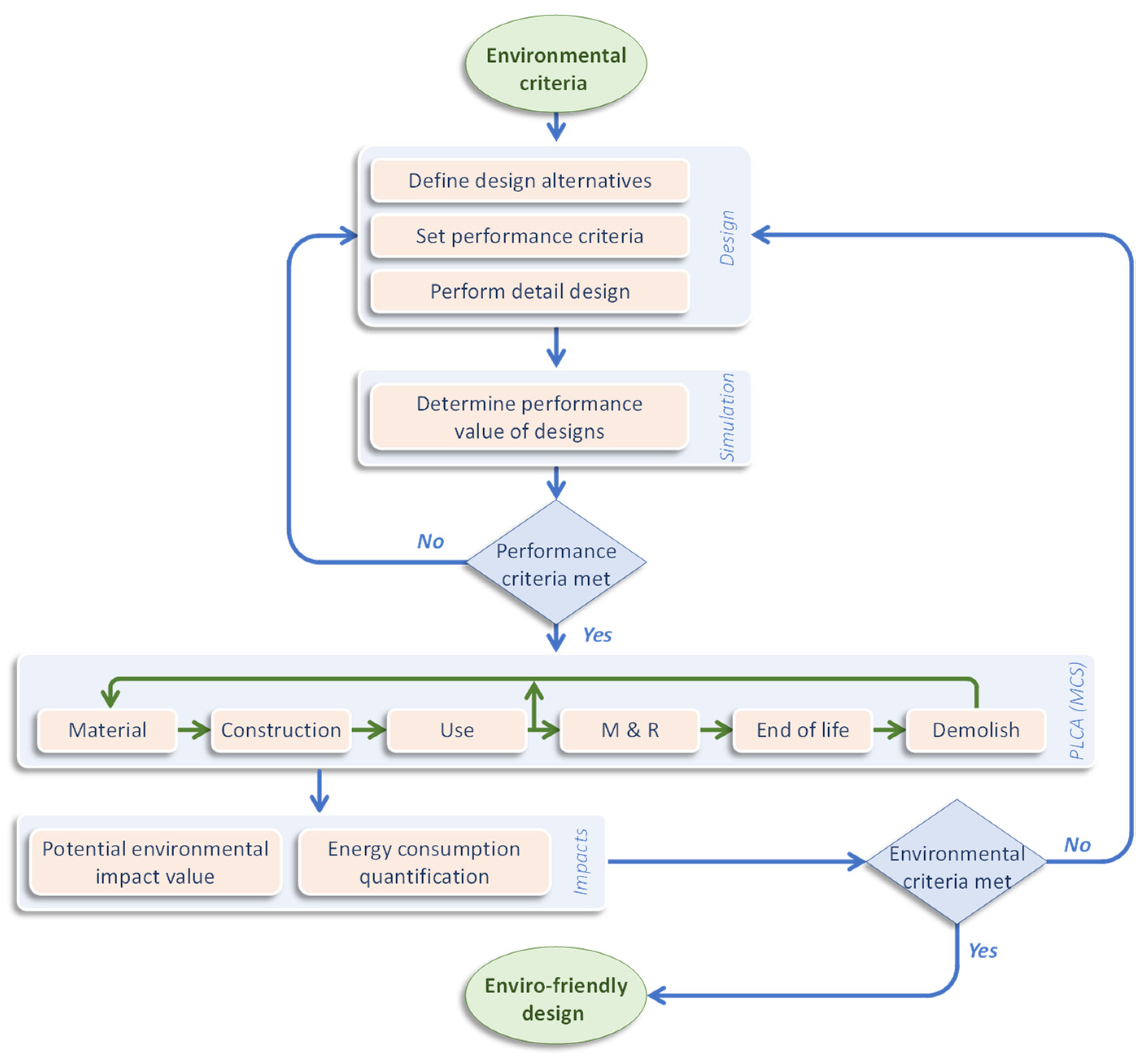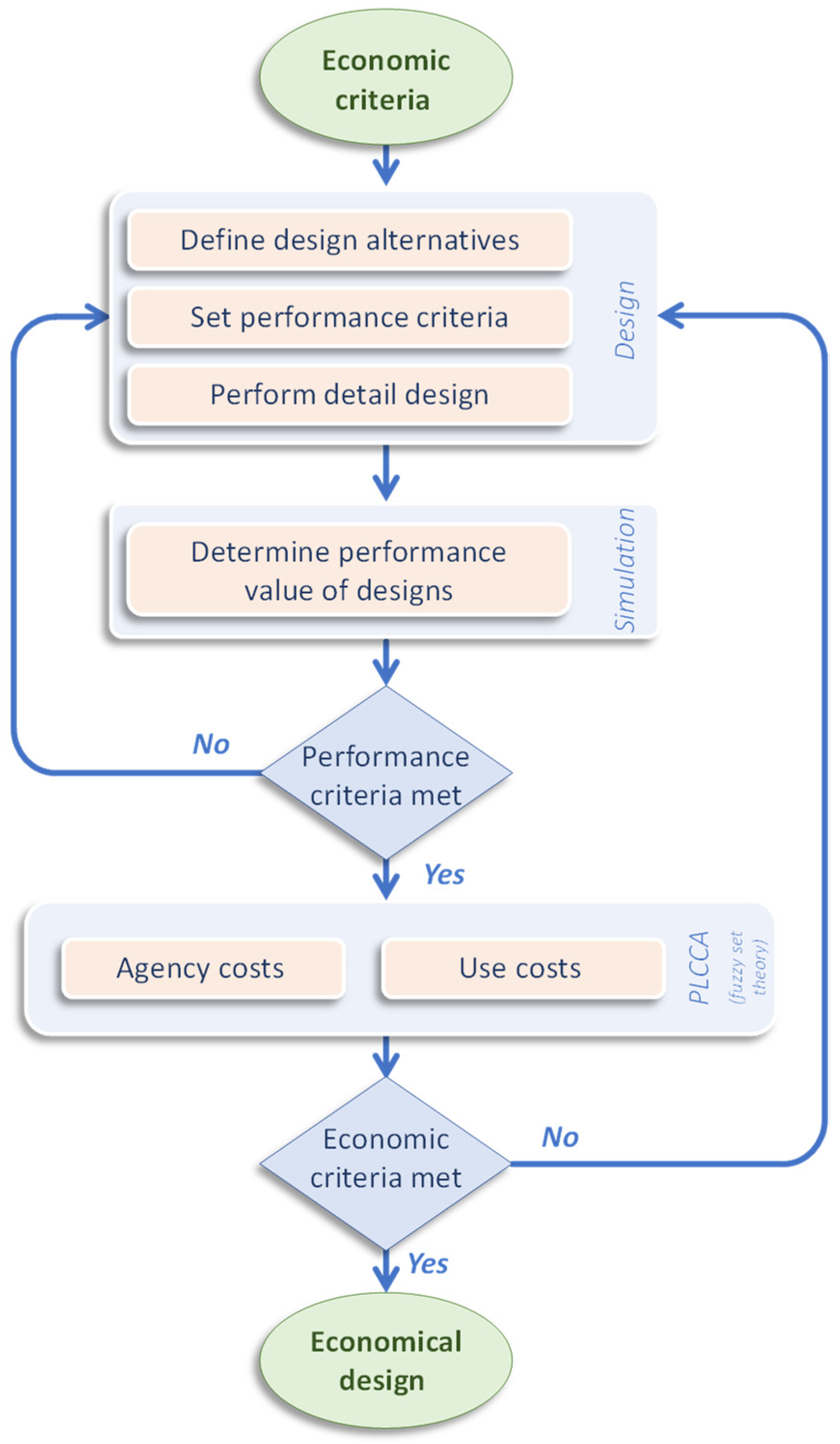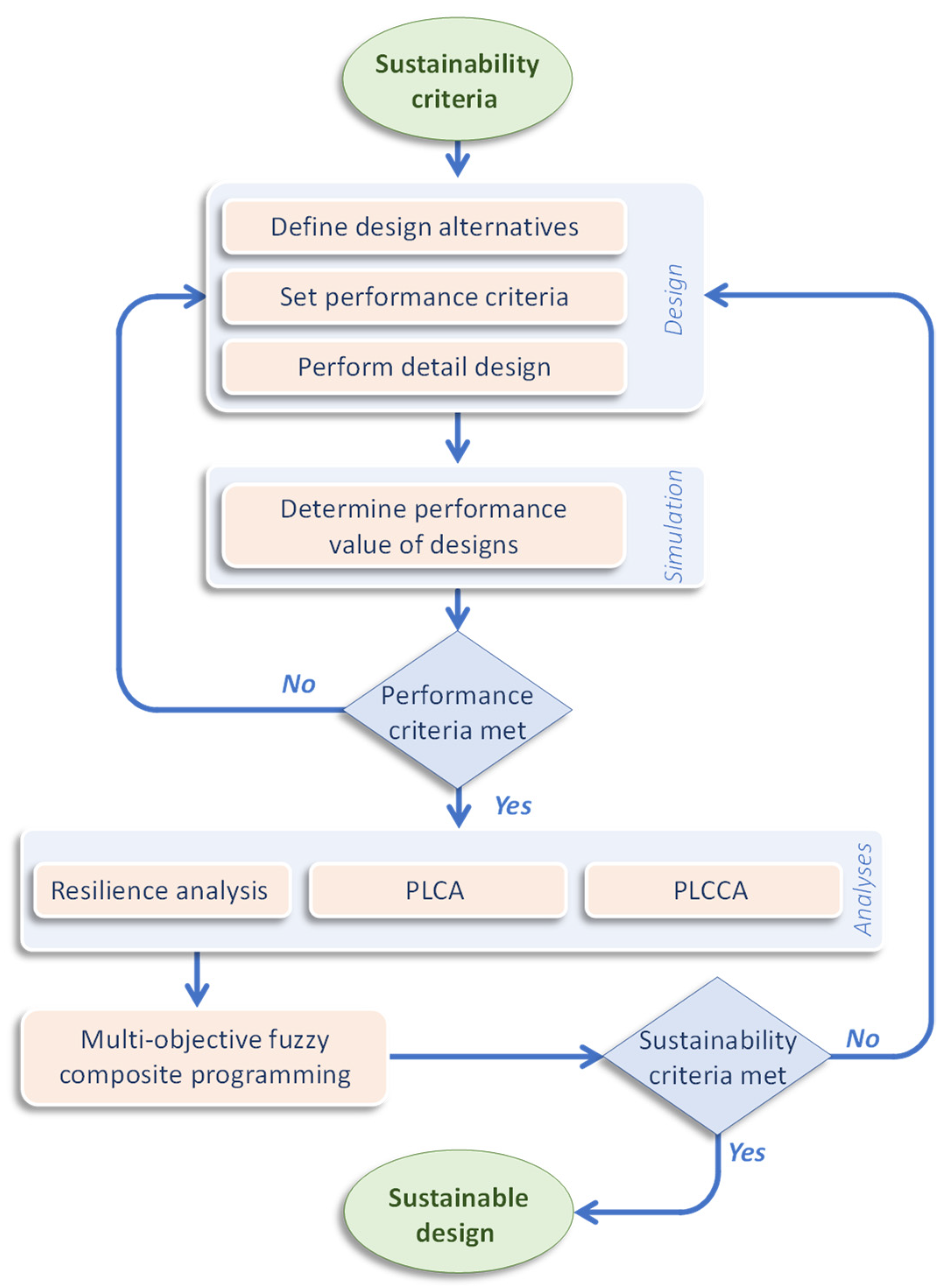The conventional methodologies for the design of flexible pavements are not adequate in providing solutions that meet the diverse sustainability challenges. Therefore, developing new methodologies and frameworks for the design of flexible pavement has become a priority for most highway agencies. On the other hand, there is no sound sustainable flexible pavement framework at the design phase that considers the key engineering performance, environmental impact, and economic benefits of sustainability metrics. Hence, premature failure of flexible pavements has become a common problem leading to a growing demand for sustainable pavement. Pavement engineers need to have access to tools that permit them to design flexible pavements capable of providing sustainable solutions under various complex scenarios and uncertainties.
- sustainability
- resilience
- life-cycle assessment
- life-cycle cost analysis
- flexible pavement
- uncertainties
1. Introduction
2. Framework for Design of Sustainable Flexible Pavement
2.1. Resilience Framework
-
Robustness: the capacity of a system and parts of the system to repel extreme event impacts without sustaining significant performance damage,
-
Redundancy: the degree of a system and parts of the system to sustain defined functional requirements in the event of a disturbance,
-
Resourcefulness: the facility to recognize and prioritize harms and mitigation reaction, and monitoring economic, technical, and performance-related problems,
-
Rapidity: the ability of a system and parts of the system to recover losses and avoid future disruptions [12].

-
Identify existing and anticipated future situations to withstand the likely traffic load and environmental influence,
-
Recognize the local context of susceptibility and exposure to extreme events,
-
Reduce the probability of failure, consequence, and time to recover.
2.2. Life Cycle Assessment Framework
The awareness of forecasting the environmental impact of construction-related activities and the need to prevent it is growing [53][64]. Thus, a framework useful for quantifying flexible pavement-related life cycle impacts at the design stage has been presented. The developed life-cycle assessment framework encourages an environmentally friendly construction activity by determining, at the early design phase, the potential environmental impact of the activity. However, it is difficult to acquire the data necessary to carry out the LCA before completing the design. Thus, LCA is not typically used in the design phase [36]. To overcome this limitation, a probabilistic LCA framework has been developed. The framework will be embedded in the design phase of the pavement to quantify the environmental impacts and energy consumptions in the holistic life of the pavement system. A framework for flexible pavement considers design inputs to quantify the energy consumption, amount of raw materials required, and emissions from the construction, maintenance, and end of life of the asphalt pavement [15]. The LCA framework allows an all-inclusive approach for recognizing strategies to reduce environmental influence throughout the life cycle of the pavement [8][54][8,66]. The developed probabilistic LCA framework is shown in Figure 23.

-
Resource efficiency,
-
Energy efficiency,
-
Reducing, eliminating, or recycling wastes and ecologically unfriendly by-products,
-
Designing pavements are safe and ecologically sound throughout their life cycle.
2.3. Life Cycle Cost Analysis Framework
LCCA is an efficient method for determining the monetary influence of possible modifications in design, construction, and materials [55][85]. Pavement engineers and managers mainly use LCCA to make a decision [30]. LCCA is a framework to evaluate the most economically practical investment from established options over their respective lifetimes [25]. To evaluate long-term alternative pavement design investment options, the inputs are very robust [56][84]. Further, all the input factors in a highway project valuation modeling have uncertainties and use the technical aspects of pavement engineering in the calculations to achieve real value for the projects [57][86]. There are several approaches used in performing LCCA including (i) probabilistic approach which addresses the variability and uncertainty associated with the LCCA input parameters including activity cost and timing and discount rate [18], (ii) probabilistic simulation-optimization LCCA approach [58][82], (iii) deterministic and probabilistic approaches [59][87], and (iv) probabilistic and fuzzy approaches [60][88]. Since the result of LCCA depends on the deterioration procedure, a consistent performance forecasting model remains a key parameter in the effective execution of real-world LCCA [61][79]. However, experts are frequently challenged with substantial uncertainties in estimating the future costs, in both short and long terms. This uncertainty promotes a probabilistic perspective of LCCA [25]. Therefore, a probabilistic LCCA framework has been developed as shown in Figure 34.

2.4. Sustainability Framework
Sustainable pavement is durable and robust which can meet the technical requirements for a sound road, preserves and restores ecosystem related to the road, makes effective use of natural, financial, and human resources. Design can influence the sustainability of the pavement in terms of life cycle costs, performance, and the materials used. Thus, the need to minimize the use of scarce primary resources is becoming urgent in the pavement industry [27]. Considering sustainability into pavement design provides various criteria for assessing pavement investment decisions, against environmental, social, and economic impacts. [34]. Constraints in budgets, rapid world population growth, and an increase in travel demand have placed a significant burden on pavement systems. Hence, pavement engineers are being forced to use sustainable criteria [31]. Several issues including augmented traffic flow, risky situation events, scarcity of quality pavement materials, and inadequate resources have triggered a declining trend in the quality of the pavement. Conventional pavement designs are not adequate in providing solutions that meet the diverse sustainability challenges. Furthermore, design variables and constraints are subject to uncertainties. The absence of a comprehensive sustainable flexible pavement design framework that considers the uncertainties of the design parameters, extreme events with high impacts, and premature failure of road infrastructures is the main challenge [66][91]. Sustainable pavement design criteria is a step up aiming at maintaining a balance between the natural and built environments [67][92]. It has become the focus of modern infrastructure design [68][93] by promoting the main criteria for a sustainable pavement. The criteria are the use of rapidly renewable resources, recycled materials, resource assurance for the next generation, the efficient uses of resources over the life of the infrastructure, reducing greenhouse gas emissions, ensuring a high level of user comfort and safety, material conservation, and resource efficiency. By considering these criteria, the sustainability of road construction contributes to the environmental wellbeing and economic and social developments in a country [29]. Pavement engineers need access to tools that enable them to design pavement systems that can produce reliable and sustainable solutions under a set of complex scenarios and uncertainties. Hence, this paper presents a comprehensive sustainable framework by integrating the calculus of a resilience framework, probabilistic LCA framework, and probabilistic LCCA framework into one single framework. Multi-objective optimization values of individual sustainability pillars are considered in the fuzzy composite program to determine the sustainability index. The overall framework is depicted in Figure 45.
| Framework | Sustainability Tool Category/Indicators | Uncertainty Consideration | Rating Systems and Certification Tools | References |
|---|---|---|---|---|
| LCA, LCCA, PMS | Decision-support tools, rating and certification tools, calculators, and guidelines | Scenario uncertainty, variability in construction materials and methods, parameter uncertainty, and use Monte Carlo analysis | Green LITES, Green roads, I-LAST, INVEST, and STARS | [6] |
| Pavement sustainability | Environmental impact Social impact | [26] | ||
| index Framework | Economic impact |
